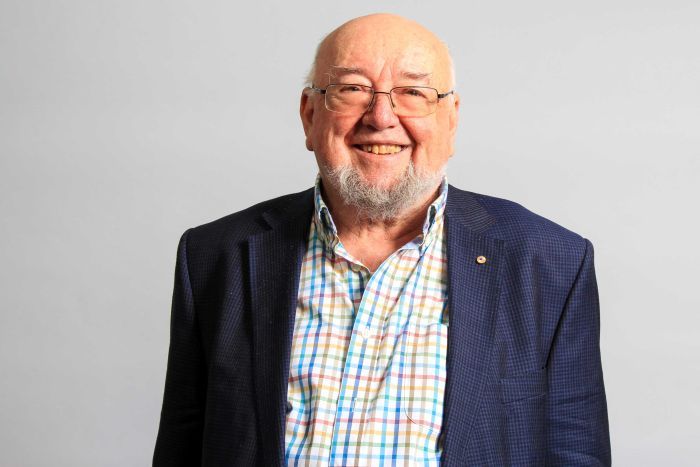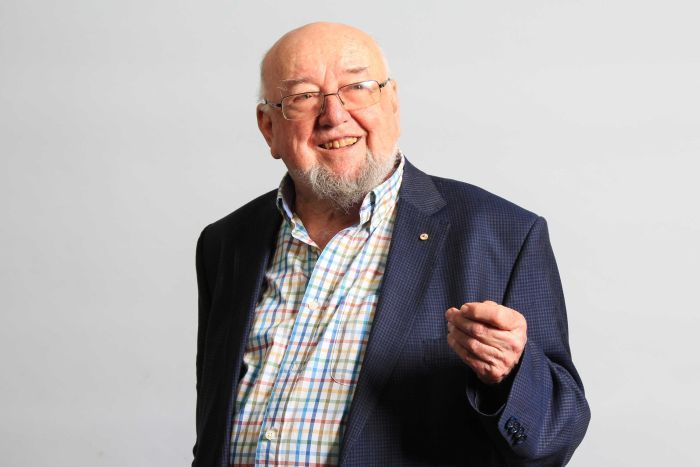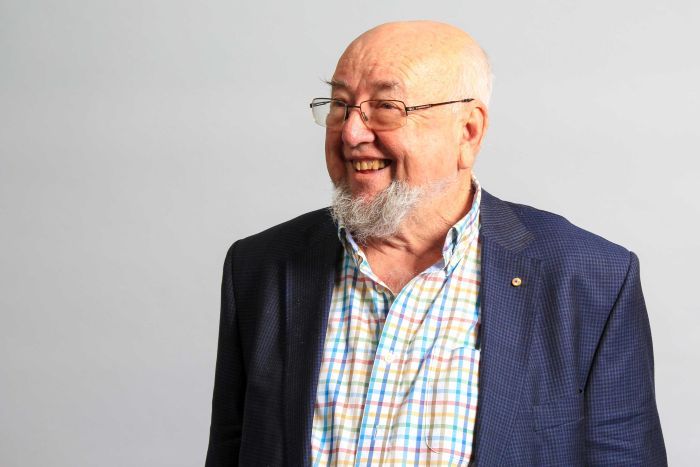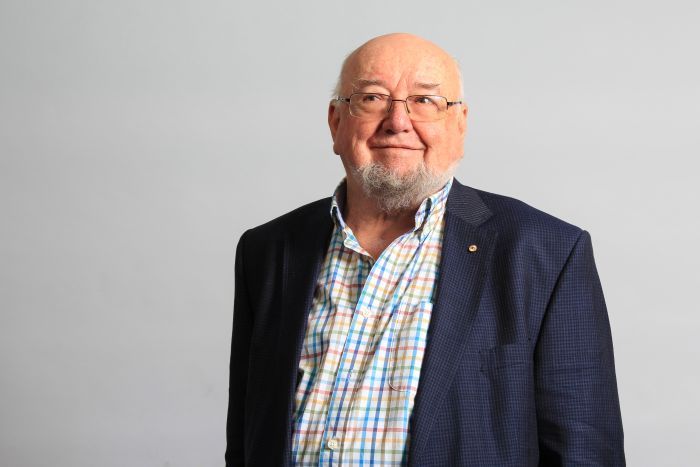Tom Keneally Explains Why He Can't Let Go of the Damage Done by the Catholic Church
By Kate Evans
Catholic priest Father Frank Docherty was expelled from the Sydney Archdiocese in the 1960s for his activism against the Vietnam War and Apartheid South Africa. After years in Canada, he returns to Sydney and finds himself confronting evidence of abuse within the church. It's 1996 and the church is flexing its legal muscle. As familiar as the scenario sounds, there is no Father Docherty. He is a central character in Tom Keneally's new novel, Crimes of the Father. Nothing too equivocal about that title. With the Royal Commission into Institutional Responses to Child Sexual Abuse ongoing, the novel's timing makes sense, culturally and historically. But why was it the right time for Keneally himself? It began in 2002, when he was asked to write an article for The New Yorker. A "failed seminarian" and an ex-Catholic, he says the church as an institution still matters to him for its "combination of tribalism, mystery, [its] mytho-poetic corpus". "It won't always leave you with the same alacrity you leave it," he says.
In 2002 he described how secrecy within the church arose from a long history of persecution. The belief in sacraments turned toxic, he wrote, and the avoidance of responsibility became an excuse to bury things, to move priests on. Keneally set Crimes of the Father in the 1990s for good reason. "The church still had a chance to redeem itself from all the lack of compassion and legalism they'd brought to this problem until then. "If the church doesn't wake up and respond to its better rather than its meaner angels, the state will make it face the issue." When the fictional Father Docherty returns from Canada, having spent decades as both a priest and a research psychologist specialising in abuse, he steps into a taxi, and the woman driving the cab is immediately hostile once she realises he's a man of the cloth. She has her own story of abuse. Docherty is confronted by evidence of the failures of his own institution everywhere he goes. He returns to his golden sandstone city, but finds it besmirched. Docherty 'based on a friend' Keneally based Docherty on his friend, Sydney priest Pat Connor, but says the fictional version is "less perfect than him".
"I can now speak so freely about him because I can't hurt his reputation with bishops," Keneally says. "[Connor] thought social justice was the same as love, the love for which St Paul said was the First Commandment." By speaking out, both the real man and his fictional counterpart were forced to leave Australia in the 1960s, the decade Keneally calls "the beginning and the end for my generation of Catholics". Accordingly, the novel looks to that time too. "The novel covers from the 1960s — the beginnings of rebellion, the Second Vatican, the beginnings of hope in a modern church, and then the getting of the faithful back under control," says Keneally. "Screwing them down, pardon the pun, under the dictates, the thumbscrews, of Humanae Vitae; turning the church into a fiercely totalitarian, fairly disciplined, right-wing organisation. "That's happened since the 60s ... so I wanted to finish in the late 90s and begin in the 60s." A priest who inspires and alarms As a young, charismatic priest Father Docherty inspires some of his flock and alarms others. One parishioner, Maureen, is a young married woman trying to work out how to be a progressive Catholic. "Docherty asks her to obey her own informed conscience ... the Vatican not the final determinant," Keneally says. "Individual conscience is supreme in Frank's book. That is the biggest issue in the Catholic Church." Maureen and Docherty become friends, and they share the intimate space of the confessional. These two are equals, and there's a frisson between them. Celibacy and its constraints are also at issue. But the confessional itself is an alarming, distressing space in the book. It's the site where one of the abusing priests in the novel begins his "seduction". The role of the confessional In writing Crimes of the Father Keneally drew on the research of former Benedictine monk Richard Sipe, an expert on celibacy and its relationship to child abuse. That research found that the confessional has a place in the methods of the paedophile priest, opening up often confusing conversations for children about sins of the flesh. "In every questionable Catholic there is a varying feeling of outrage that at the age of seven we were lumbered with the neurosis of the confessional," Keneally says. Disconcertingly, Crimes of the Father takes the reader inside the justifications and actions of abusive priests, but equally alarming are the power plays made in cathedrals and back rooms as the church prepares court cases and confronts victims with all available force. One young character refuses to sign confidentiality agreements or accept monetary compensation, a deliberate parallel with the case of John Ellis, who unsuccessfully sued the Archdiocese of Sydney in 2004 after being abused as an altar boy in the 1970s.
Keneally describes the church in this mode as a "worldly wise corporation". "It's supposed to be a mountain of compassion ... the temple above all temples," he says, "and here it is behaving like a chemical company that has had a spill." "That's what was profoundly shocking. This program of reaching not for the compassion of Christ but for your best lawyer." Finally, though, this is not one of Keneally's historical works, nor is it a longer version of the original New Yorker article. It's a novel; it's the story of the grief of a woman named Liz, the compassion of Frank, the tenderness of Maureen, the anger of Sarah and the bravery of those who refused to be passive "victims". So why a novel and not a history of the church? "Fiction hath charms — that's all I have to say," he says. "You're telling truth through lies. But they are true lies, the lies of fiction. They're authentic lies. You still depend on absolute reality."
|
.
Any original material on these pages is copyright © BishopAccountability.org 2004. Reproduce freely with attribution.



